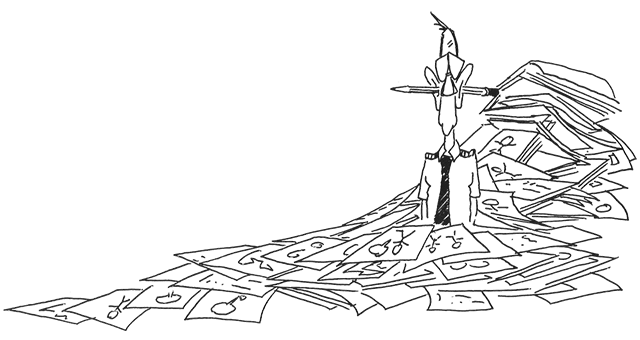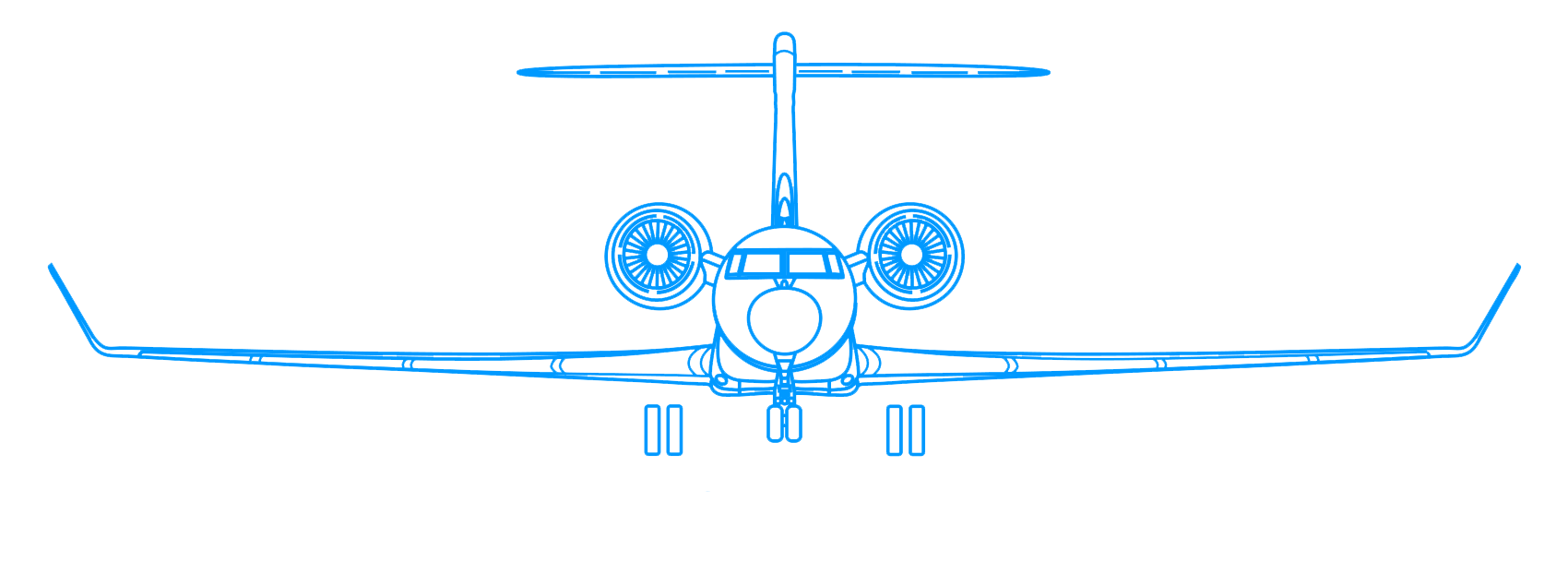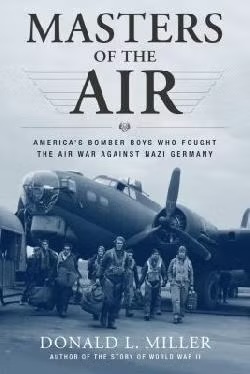As you may recall, I reviewed the Apple TV Series, “Masters of the Air,” last month. I had high hopes but was disappointed because it was historically inaccurate, the portrayal of the flying was simplistic, and the choice of main characters did a poor job of telling the story of air power over Europe during World War II. The book, “Masters of the Air: America's Bomber Boys Who Fought the Air War Against Nazi Germany,” by Donald L. Miller, on the other hand, is a masterpiece and gets each of these areas exactly right.
— James Albright

Updated:
2024-06-10
The History
Who is to say one portrayal is accurate and the other isn’t? I think you can do this with a cursory study of other source material and realize the TV series was flawed. But an even better way is to look at the voluminous primary source material available shortly after the war to see just how well the book does.
The television series, for example, paints the British Air Force as heartless and inept by comparing their nighttime carpet bombing to the valiant American insistence on daylight precision bombing. They were taking the easy way out, mercilessly killing civilians because they lacked American technology, training, and sheer guts. Americans, on the other hand, were suffering huge losses but bombing only military targets with pinpoint precision. This ignores many facts known at the time. This is wrong on both counts. The British had indeed started with the daylight bombing and suffered tremendous losses. But they learned quickly that precision bombing was impossible with the technology of the time, especially given the challenges of weather, lethal ground-to-air flak, and air-to-air fighter defenses. The Americans, on the other hand, came to the same conclusions after unforgiveable losses. The book does a great job of showing how the crews in the aircraft knew immediately how poorly the bombing performance was while their leaders stuck stubbornly to the idea of daylight precision bombing, almost to the end.
Those of us with formal educations in air power will be familiar with “The United States Strategic Bombing Survey,” written by a board of experts assembled to produce an impartial assessment of the effects of the Anglo-American strategic bombing of Nazi Germany during the European theatre of World War II. Though I had to study it, I never attempted to read the thousands of pages and simply took the assessment of others as fact. Donald Miller has extracted countless statistics from the report to demonstrate that our daylight precision bombs rarely hit their targets and when they did, the impact wasn’t as great as initially reported. Early efforts from most bombardiers threw bombs miles from the target. Even after putting only the best bombardiers in the front of formations and having everyone else release the bombs when the leader dropped, fewer than 5 percent of the bombs made it to within 1,000 feet of the target.
The People
The book not only gets the history right, it provides a visceral look into the men in the bombers that flew into harm’s way and the leaders that commanded them. My favorite story was in the aptly named chapter, “The Anatomy of Courage.” Sergeant Maynard “Snuffy” Smith won the Medal of Honor for his heroism saving lives and his bomber. He was late for the award ceremony because he was peeling potatoes as punishment for returning late on a pass. The story is awe inspiring and I’ll extract that in full at the end of this review. (There are two “f-bombs,” so pass on this if that offends you.)
Air Power is a big subject and the people involved span the history of aviation itself. Master of the Air gives you a look into the main players, some of whom only occupy a few paragraphs but are covered to show just how many people had a hand in the evolution of air war.
I’ll close with a section of the book about future General Curtis LeMay. If, like me, you think of LeMay only in the caricature of General Jack Ripper from “Dr. Strangelove,” the book offers a side of him that should change your opinion. I still believe LeMay morphed into something that did more harm than good once he was elevated to flag rank, but it should be obvious that he was crucial to the eventual success over Europe and the Pacific.
Air discipline," says an Air Force report, "was poor and navigation sloppy."
After this, things changed, and the unlikely agent was the prewar theorist of bomber warfare, Brig. Gen. Haywood Hansell. On January 1, 1943, Hansell replaced Laurence Kuter, Spaatz's newly appointed chief aide in North Africa, as commander of the Eighth Air Force's 1st Bombardment Wing.
Three years older than LeMay, Hansell came from an old Southern military family and was a close student of the history of warfare, a great admirer of Robert E. Lee, a general, unlike Sherman, who waged war only on combatants. Hansell was a warm, genial man with an even disposition who was known to his friends as "Possum" because of his scoop nose and clever mind. Everyone who worked with him considered him one of the brightest heads in the Army Air Forces. This was his first combat command, the opportunity he had been thirsting for, a chance to test the airpower theory he had helped to fashion.
Big things were expected of him, but he quickly found himself at odds with a blood-and-guts major who was his exact opposite in temperament and upbringing, and who had been one of his students at the Air Corps Tactical School. LeMay came on like a storm, bringing in turbulence with him. Hansell's classroom theories were being smashed to dust, LeMay told him directly, by the finest antiaircraft defenses in the world. America's bombers could not fly above enemy flak or outrun enemy fighters, as Hansell and the Bomber Mafia had argued; nor could they bomb as precisely as they had in the high desert skies of the American Southwest. And the bombers desperately needed the long-range fighter escorts that Hansell and his fellow war planners had considered both unnecessary and impossible to build.
At wing meetings, LeMay tore into Hansell with tough questions. Who was the sad sack who put .30 caliber peashooters in the nose of the bombers? Who was the "pickle barrel" theorist who said we could bomb accurately and decisively without fighter cover? Hansell, a smooth consensus builder, was shaken by LeMay's pugnacious probing and would try to politely shift the subject. Hansell's saving element, however, was his lack of interest in the nuts and bolts of military tactics and his eventual willingness to concede tactical matters to his group commanders while he focused on target priorities, a subject no one in the Air Force knew better.
In the end, they formed an effective, if less than amicable, team: the dreamer and the doer.
If you have any interest at all in air power, the air war over Europe during World War II, or the stories of the men who fought for air superiority in that war, “Masters of the Air” is a must read. You should avoid the television series, lest it corrupt your view of those same points.
Epilogue: The tale of “Snuffy” Smith
Here is one of those human interest stories that speaks volumes of what Tom Brokaw would later dub, “The Greatest Generation.”
With morale sinking badly, Air Force public relations officers begged reporters stationed in London to come up to the bases and do more stories on the boys. "The crews wanted someone to know they were fighting and dying, and it was the PROs' job," [Reporter Andy] Rooney said, "to get their names in a newspaper somewhere, anywhere." That suited Rooney, who wanted a break from writing depressing stories about men killed in combat. That spring, the most stirring story of survival in the Eighth was of a pint-sized, troublemaking sergeant in the 306th Bomb Group named "Snuffy" Smith.
Maynard Harrison Smith was with the first group of replacements to arrive that spring; and at age thirty-two, he was one of the oldest. The son of a small-town judge, he styled himself a debater and frequented the pubs around the base arguing politics with the locals. Back on base, he was forever in trouble, known to his hut mates as "a real fuckup."
Smith went on his first raid on May 1, 1943. His veteran pilot was Lt.Lewis Page Johnson, and Smith, filling in for another man, was assigned to the ball turret, even though he had never before flown in the glass bubble. Coming back from St. Nazaire the group sighted land and started to descend. "The visibility was lousy, but we were pretty happy," the co-pilot later described the scene in the plane. "All of a sudden, there was a terrific crossfire of flak, wham wham wham wham, and we were in the middle of it." They were not over England. A navigator's error had brought them over the U-boat base at Brest. Moments later, they were attacked by a swarm of Fw 190s that came ripping through the haze.
William Fahrenhold, the top turret gunner, came down and said there was "a helluva fire in the back of the ship." The interphone was shot out, so Johnson ordered him to go back and appraise the damage. When Johnson opened the forward radio compartment door, a solid wall of fire stopped him in his tracks. "The ammunition was exploding and I saw Smith walking through the fire with shell casing bouncing off his [parachute] harness."
Just before this, Smith had crawled out of his turret and found himself bestride two angry fires, both closing in on him. Sheets of flame were coming out of the radio room and there was another fire in the rear section. "Suddenly, the radio operator came staggering out of the flames," Smith later told Rooney. "He made a bee line for the gun hatch and dived out. I glanced out and watched him hit the horizontal stabilizer [the plane's tail], bounce off, and open his chute." Seconds later, the two waist gunners bailed out. Interviewed later, the pilot said he couldn't understand "why Smith stayed."
With the smoke and gas fumes making it almost impossible for him to breathe, Smith wrapped a sweater around his face, grabbed a fire extinguisher, and went to attack the fire in the radio room. "Glancing over my shoulder at the tail fire, I thought I saw something coming, and ran back. It was [Roy H.] Gibson, the tail gunner, painfully crawling back, wounded. He had blood all over him. Looking him over, I saw that he had been hit in the back and that it had probably gone through his left lung. I laid him down on his left side so the blood would not drain into the right lung, [and] gave him a shot of morphine." The first aid kits on American bombers were equipped with single-injection morphine vials. Crewmen were taught to break off the glass casing and feed the morphine into the nerve system of a wounded man by squeezing the tiny tube. It was difficult for Smith to do this with fire and freezing wind filling the plane and with the wounded man wearing heavy clothing.
After stabilizing Gibson, Smith "went back to the fires." Just then a Focke-Wulf returned to finish off his Fortress. "I jumped for one of the waist guns and fired at him ... [then] went back to the radio room fire again. I got into the room this time and began throwing out burning debris. The fire had burned holes so large in the side of the ship that I just tossed the stuff out through them. Gas from a burning extinguisher was choking me, so I went back to the tail fire. I took off my chute so I could move easier. I'm glad I didn't take if off sooner, because later I found that it had stopped a .30 caliber bullet."
After emptying the last extinguisher, Smith urinated on the fire and tried to smother it with his hands and feet until his gloves and boots began to smolder. "That FW came around again and I let him have it. That time he left us for good. The fire was under control, more or less, and we were in sight of land."
Smith knelt down and tried to comfort the wounded tail gunner. He told him they were home clear, but he knew the tail wheel was gone and feared the shock of landing would break the Fort in half. The stubby gunner had fought the fire and the enemy alone for an hour and fifteen minutes. The full ammunition cans he tossed out of the plane weighed a hundred pounds, just thirty pounds less than he did.
With the bombers flying in close formation, the crew of the ship on Johnson's left wing, piloted by Capt. Raymond Check, had witnessed the scene. "We saw Smith going past the open waist through the flames to help the tail gunner. We could see the ammunition inside his ship exploding through the openings above and at the side of the radio compartment. We could see him fighting the fire and then stopping to fight off attacking enemy pilots. All this was done with the wind blowing the flames over him. That he did not lose his life by these actions is a matter entirely with his Creator."
When the battle-tough Fort landed on an emergency field near Land's End the fuselage held. "It was a miracle she didn't break in two," Smith told Air Force investigators. "I wish I could shake hands personally with the people who built her."
Snuffy's story was "a dream-come-true for public relations officers and his exploits were played up to the press to the hilt," wrote the 306th's historian. Usually, a Medal of Honor recipient was sent home to receive his award from the president, but Secretary of War Stimson was touring the airbases, and the men, it was thought, would get a boost from seeing one of the sergeants receive the nation's highest award for bravery in combat.
The day Stimson arrived in an eight-car caravan Smith was nowhere in sight. A search was quickly organized and he was found in the mess kitchen peeling potatoes. He had been assigned to KP duty for coming in late after a pass and had forgotten what time he was expected to show up for the ceremony. "He was," said his citation, "an inspiration to the armed forces of the United States." But the boys who knew him, said Rooney, never stopped thinking of him as a "fuckup." Maybe so, but this dour screw-up from Caro, Michigan, had performed what his pilot called an act of "complete self-sacrifice."

